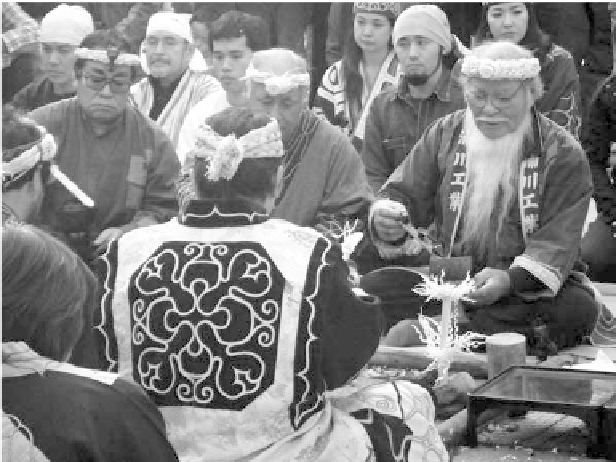Geography Reference
In-Depth Information
(2010) it is only 42 percent. Even so, Japan is still a
country where the elderly are revered and taken care of
by their family . Moreover, the government must cater to
older people not only out of this inherent respect for the
elderly but also because they are the most likely to vote.
Out of its concern, Japan' s government has estab-
lished a program of subsidies for each preschool child
along with an expanding network of day-care centers
that are opened until late at night. Local governments
have their own programs. For example, one prefecture in
rural western Japan has launched “Operation Stork.”
This promotes such things as TV commercials and post
cards that state: “Get a brother or sister for your child.”
The majority of public surveys show that such
efforts are having little effect on childbearing patterns.
Most women simply do not want to get stuck raising a
child by themselves. Many believe that Japanese hus-
bands work long hours and come home late not simply
because of work pressures, but because they enjoy the
company of their male colleagues after-hours more than
what is called “home service.”
Feminists in Japan say that deep-rooted male atti-
tudes, steeped in cultural tradition, are changing but all
too slowly . They view the low birth rate as a “silent re-
silience by women” to a male-dominated system.
minorities: native ethnic groups such as the
Ainu
; for-
eign ethnic groups such as the Koreans and Chinese; and
social outcasts known as
Burakumin
or
Eta
. Ethnic and
social minorities make up about 4 percent of the popula-
tion, roughly 5 million people.
Native to Hokkaido, the Ainu are racially unrelated to
the Japanese (Figure 12-8). It is thought that are related to
peoples of eastern Russia. Less than 20,000 identify them-
selves as Ainu. Their culture has been undermined by as-
similative pressure; they suffer discrimination in all walks
of life, and they live in relative poverty . There are only 10
Ainu speakers left. Media portray them as adorable and
folksy and as living close to nature.
Recent public awareness of the Ainu plight has not
reduced discrimination, an issue most Japanese do not
face. In 2008, Japan' s legislature finally passed a resolu-
tion that recognizes the Ainu as a people in their own
right. According to historian David Howell (1996), rec-
ognizing some aspects of Ainu identity may generate
pride but this “also shields Japanese society at large from
the need to re-examine its basic premises.”
There are about 600,000 ethnic Koreans living in
Japan, descended from the 2.5 million drafted as soldiers
or forced laborers during Japan' s 35 years of colonial rule
in Korea. Most are classed as resident aliens; until the
1990s, even those Koreans born in Japan were routinely
fingerprinted and denied citizenship. About 20,000
Koreans died in the bombing of Hiroshima, but the needs
of bomb-diseased survivors are virtually ignored. Dis-
crimination in housing, employment, and education is
THE DARK SIDE
A myth of Japan is that it is an ethnically and culturally
homogeneous society . In fact, Japan has three classes of
Figure 12-8
Here, Ainu community members perform a spiritual
ceremony called “Kamui-nomi” at the Charanke
festival in T Tokyo.
©Scilla Alecci/AFP/Getty
Images, Inc.


















Search WWH ::

Custom Search